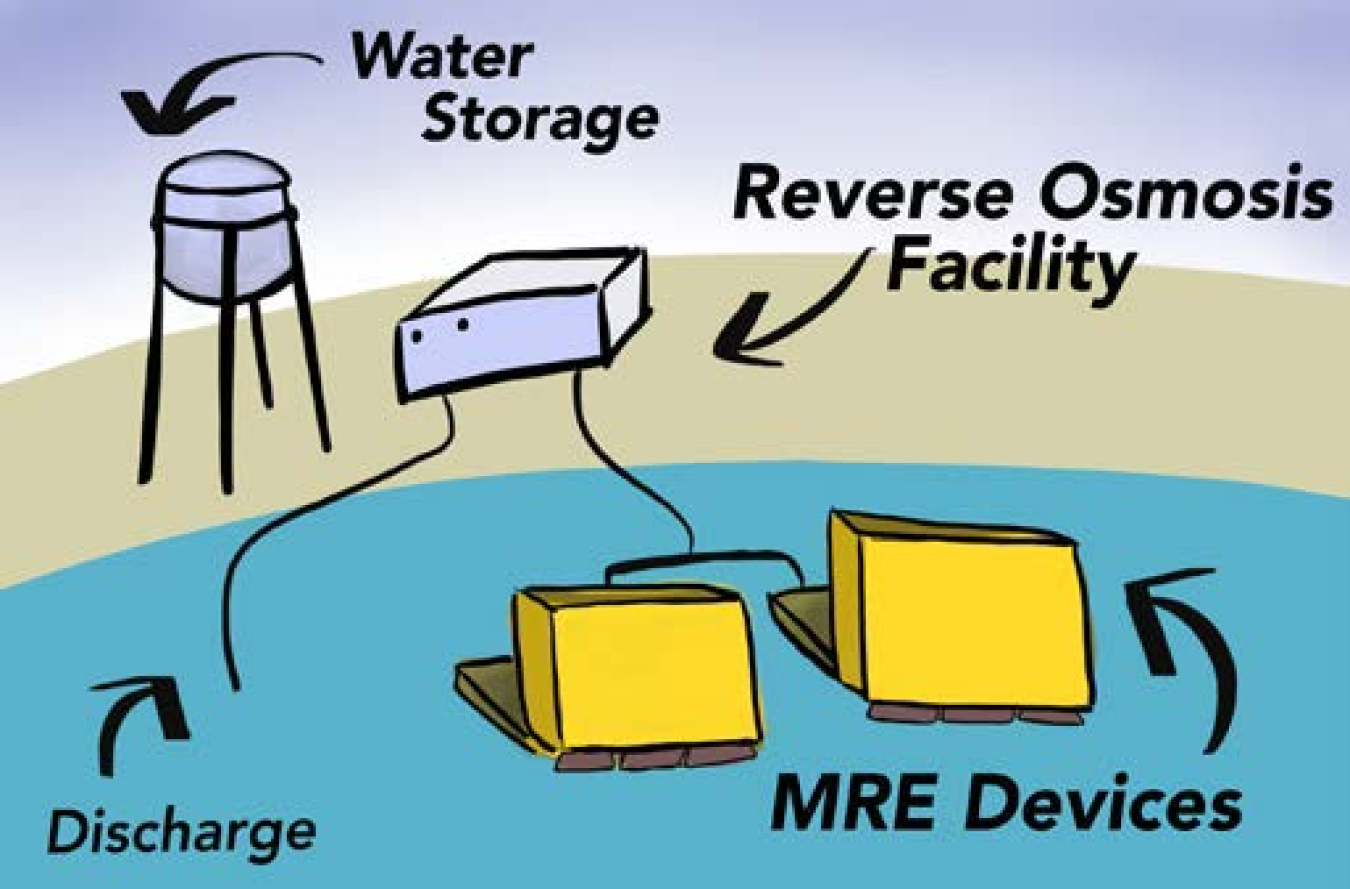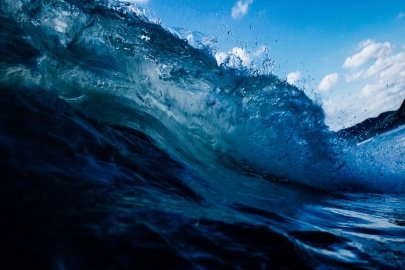As a focus area of PBE, Resilient Coastal Communities (RCC) supports energy innovation for remote, coastal, and island communities with a focus on end-user needs, emergent blue economy markets, and technology optimization. Identifying R&D challenges and building the foundations of collaborations and partnerships are fundamental to the achievement of RCC objectives.
Marine energy resources could be located near potential desalination sites and population concentrations along the coast; therefore, areas that have unreliable grid connections or water infrastructure may receive both electricity and water benefits from marine energy systems. In the long term, marine energy could provide low-cost, emission-free, drought-resistant drinking water to larger municipalities.
Core focus areas are technology optimization in remote communities, system integration, and energy storage. Some of the major efforts related to RCC goals include:
- Building connections, partnerships, and capacity for remote, coastal, and island communities to evaluate their energy planning and resilience goals.
- Testing marine energy devices in a variety of remote communities to validate grid-forming and baseload generation capabilities, making it possible to integrate and hybridize energy services.
- Demonstrating and commercializing wave-powered desalination for disaster recovery, defense applications, international development, or other specific water market segments as a complementary technology with existing systems.
- Identifying designs and research for integrated energy systems for remote, coastal, and island applications focused on local industries, transportation, and enhanced resilience.
- Providing resources and access to on-the-ground support for remote, coastal, and island communities in the United States seeking to transform their energy systems and reduce their vulnerability to energy disruptions.
Resilient Coastal Communities

Figure 7.1. Marine renewable energy (MRE) application overview for desalination. | Molly Grear, PNNL
The energy required to separate salts and other dissolved solids from water makes desalination an energy-intensive process. Marine energy resources, which are inherently located near potential desalination water supplies and highly populated areas along coastlines, could provide low-cost, emission-free, drought-resistant drinking water to larger communities.
Download the chapter about Desalination >>

Figure 8.1. Marine energy application overview for emergency response. | Molly Grear, PNNL
Coastal areas tend to be densely populated and prone to extreme events, such as tsunamis, tropical storms, and flooding, which limit access to freshwater and electricity. Marine energy devices could be integrated into piers, jetties, and breakwaters to provide shoreline protection, generate power, improve power source diversity, and reduce reliance on diesel fuel. Marine energy could be used to support other immediate needs, such as emergency desalination.
Download the chapter about Coastal Resiliency and Disaster Recovery >>

Figure 9.1. Hydrokinetic energy application overview for isolated communities. | Molly Grear, PNNL
In remote communities, military bases, and resorts, electric power is essential for lighting, water pumping, and running services such as wastewater treatment. Many remote communities depend on expensive diesel fuel for their power. Marine energy technologies could complement or replace diesel fuel in remote communities, offering cost savings, environmental benefits, and energy resiliency.
Download the chapter about Isolated Power Systems >>
Powering the Blue Economy News & Publications
WPTO's Marine Energy e-newsletter shares news and updates on tools, analysis, and emerging technologies to advance marine energy.
WPTO's e-newsletter brings hydropower and marine energy funding opportunities, events, publications, & activities directly to your inbox.











